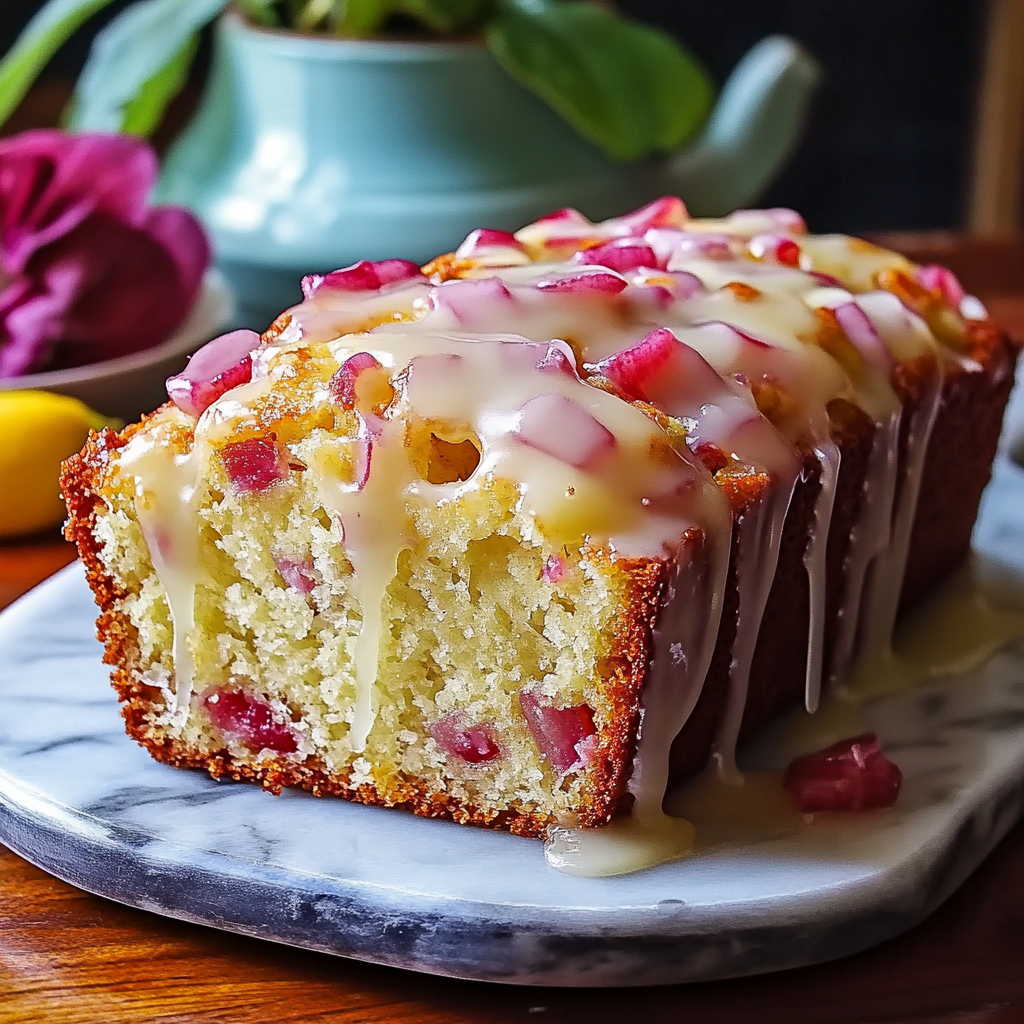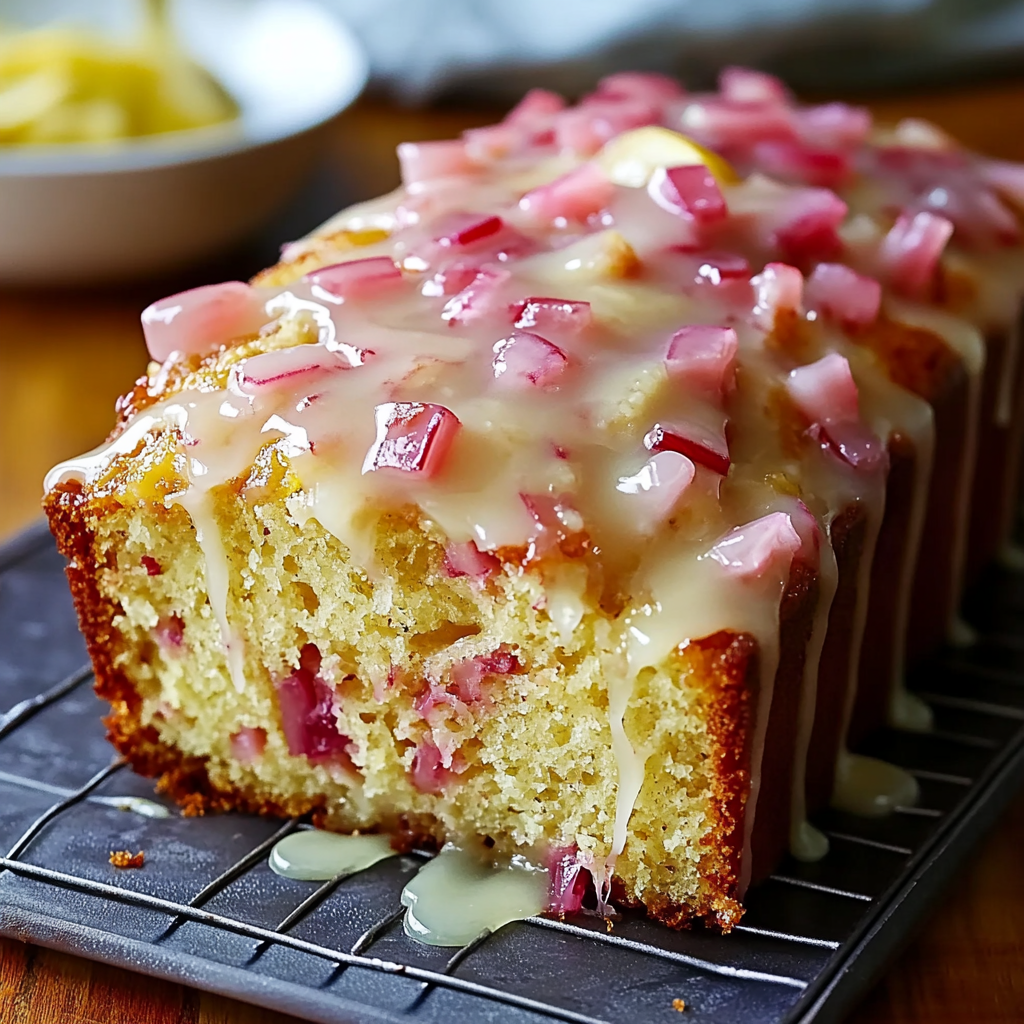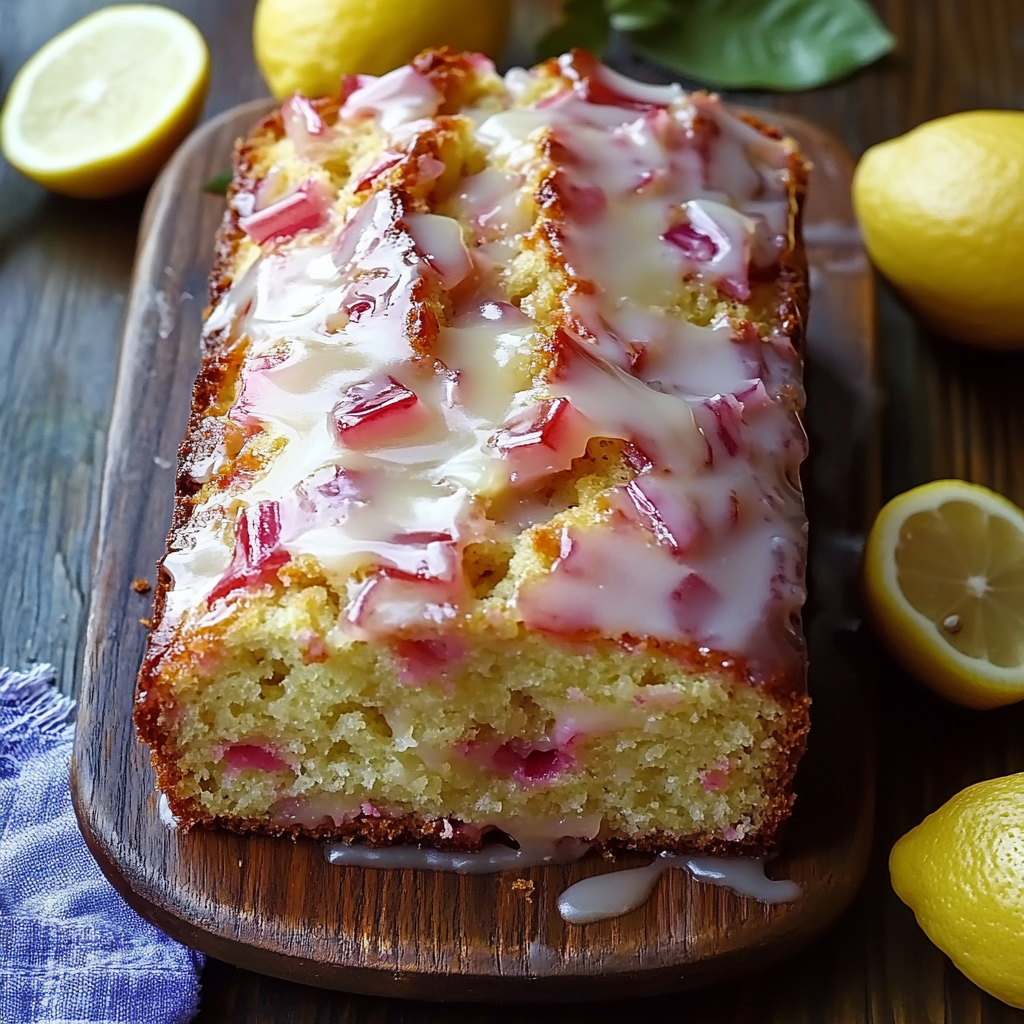 Pin it
Pin it
This lemon rhubarb loaf has become my spring and summer baking staple, combining bright citrus flavors with the unique tartness of seasonal rhubarb. The simple lemon glaze adds just enough sweetness to balance the tangy fruit, creating a perfectly moist quick bread that disappears quickly whenever I serve it.
I first baked this loaf when my neighbor shared an abundance of rhubarb from her garden. What started as a way to use up extra produce has become my most requested recipe when hosting spring brunches.
Ingredients
- All purpose flour: Ensures a tender crumb and proper structure
- Baking soda and powder: Provide the perfect rise for a light texture
- Butter: Adds richness and moisture throughout the loaf
- Fresh lemon juice and zest: Deliver bright citrus flavor that complements the rhubarb
- Buttermilk: Creates tenderness and a subtle tang
- Fresh rhubarb: Brings unique tartness and beautiful pink flecks throughout
- Vanilla extract: Balances the fruit acidity with warmth
- Powdered sugar: Creates a simple glaze that adds sweetness and visual appeal
Step-by-Step Instructions
- Prepare Your Workspace:
- Preheat oven to 350°F and prepare your loaf pan with a thorough coating of butter and light dusting of flour to prevent sticking. Gather all ingredients measured and ready for efficient mixing.
- Mix Dry Ingredients:
- Whisk flour, baking soda, baking powder, and salt in a medium bowl until thoroughly combined. This step ensures leavening agents are evenly distributed for proper rising.
- Cream Butter and Sugar:
- Beat butter and sugar together until the mixture becomes noticeably lighter in color and fluffy in texture, about 3 minutes. This incorporates air into the batter for a lighter finished loaf.
- Add Wet Ingredients:
- Mix in egg completely before adding buttermilk, lemon zest, lemon juice, and vanilla. The mixture may look slightly curdled which is normal due to the acidic lemon juice reacting with the buttermilk.
- Combine Wet and Dry Mixtures:
- Gradually fold dry ingredients into wet ingredients with gentle strokes just until no flour streaks remain. Overmixing at this stage will develop gluten and create a tough loaf.
- Incorporate Rhubarb:
- Gently fold diced rhubarb into the batter with a spatula using a light hand to maintain even distribution while preserving the batter's airiness.
- Bake to Perfection:
- Pour batter into prepared pan and bake for 55 to 65 minutes, rotating halfway through. Look for golden brown edges that pull slightly from the pan and a clean toothpick test.
- Cool and Glaze:
- Allow loaf to cool in pan for 10 minutes before transferring to a wire rack. Wait until completely cooled before whisking together powdered sugar and lemon juice and drizzling over the top.
 Pin it
Pin it
What I love most about this recipe is how the rhubarb softens during baking but maintains its distinct tangy character. My grandmother always paired rhubarb with strawberries, but this lemon combination actually highlights the vegetable's unique flavor profile much better.
Storing Your Lemon Rhubarb Loaf
This quick bread maintains its moisture and flavor for up to three days when stored in an airtight container at room temperature. For longer storage, refrigerate for up to a week, though the texture may become slightly more dense. You can also freeze individual slices wrapped in plastic wrap and aluminum foil for up to three months. Thaw overnight in the refrigerator and bring to room temperature before serving for the best flavor experience.
Rhubarb Selection and Preparation
The secret to a perfect rhubarb loaf lies in choosing and preparing your rhubarb properly. Look for firm, crisp stalks with a bright pink to red color for the most vibrant appearance in your loaf. Always remove and discard the leaves as they contain toxic compounds. For this recipe, dice the stalks into small pieces about 1/4 inch in size to ensure even distribution and proper cooking. If your rhubarb is particularly juicy, pat it lightly with paper towels before adding to the batter to prevent excess moisture.
 Pin it
Pin it
Seasonal Variations
While this recipe showcases classic lemon and rhubarb, you can adapt it throughout the year based on seasonal availability. In early summer, replace half the rhubarb with fresh strawberries for a traditional pairing. For fall baking, substitute diced apples and add a teaspoon of cinnamon to the dry ingredients. During winter months when fresh rhubarb is unavailable, use frozen rhubarb thawed and thoroughly drained or try cranberries for a similar tart profile. The versatile lemon base works beautifully with many fruit combinations while maintaining its moist, tender crumb.
Frequently Asked Questions
- → Can I use frozen rhubarb instead of fresh?
Yes, frozen rhubarb works well. Thaw and drain it thoroughly before adding to the batter to avoid excess moisture.
- → How can I make the loaf more lemony?
For a stronger lemon flavor, add extra lemon zest or a small amount of lemon extract to the batter.
- → What can I use as a substitute for buttermilk?
You can make a buttermilk substitute by mixing 1/2 cup milk with 1/2 tablespoon lemon juice or vinegar and letting it sit for 5 minutes before use.
- → How should I store the loaf?
Store the loaf in an airtight container at room temperature for up to 3 days or refrigerate it for up to a week for longer shelf life.
- → What is the best way to create a crispy top crust?
Sprinkle a bit of granulated sugar on top of the batter before baking to create a crisp, sweet crust.
- → Can I add other fruits to this loaf?
Yes, you can experiment with adding berries like strawberries or blueberries for added flavor and texture alongside the rhubarb.
